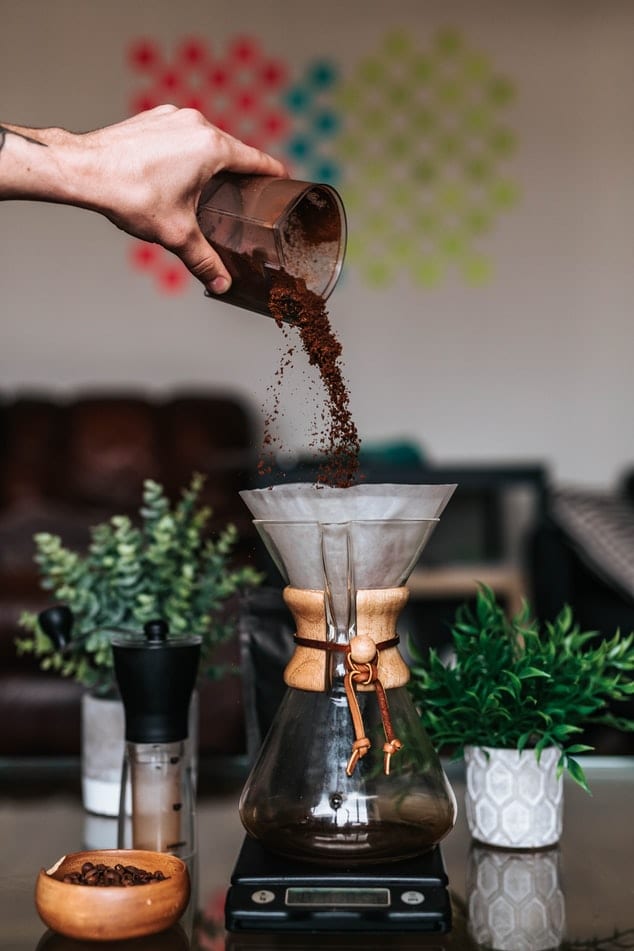BREWINg tips, Storage and Freshness
Having a morning cuppa is a ritual for many Kiwis. But it’s not a good idea to be complacent when it comes to preparing your favourite morning beverage so a few tips on ideal brewing practice won’t go astray.
general tips

There are a number of factors that can affect your brew. Listed in order of importance they are:
- The quality and freshness of coffee
- The cleanliness of the brewing equipment
- The quality of the water
- Coffee to water ratio
- Grind size
- Water temperature
- Contact time
- Heat retention
The ideal brewing practice is:
- Start with fresh (roasted on date is your guarantee) quality coffee purchased from your local roaster
- Grind immediately before you brew
- Use fresh, filtered water
- Pre-heat your vessels
- Drink prepared coffee immediately
If you have some left over coffee and you want to consume it later pour into a heated carafe; don’t let it stew in the pot.
There are many ways to prepare your coffee and enjoy this romantic drink. Far be it for us to tell you what the best way is because enjoying this beverage, like any other, is very personal and, in general, there are few absolutes when it comes to making it.
IN THE FOLLOWING SECTIONS WE DESCRIBE THREE OF THE MORE COMMON AND VERY POPULAR BREWING METHODS: ESPRESSO, PLUNGER AND STOVETOP. HOWEVER WE ENCOURAGE YOU TO EXPERIMENT AND TRY AS MANY MEANS AS YOU CAN. YOU’LL BE AMAZED AT HOW THE SAME BLEND CAN TASTE ENTIRELY DIFFERENT WHEN USING DIFFERENT PREPARATION METHODS.
brewing methods
The keys to obtaining good results are:
- Using quality fresh beans purchased from your local roaster
- Grinding the coffee correctly
- Using clean equipment and filtered water
- Timing the process
- Drinking the coffee immediately after brew time (four minutes) or transferring it into a heating carafe for later consumption
Preparation Guidelines
Step 1. Grind the coffee using a burr grinder if possible
Step 2. Add coffee to vessel; 14 g of coffee to 240 ml of water – one tablespoon per cup
Step 3. Pour water raised to 95 degrees Celsius (below boiling or take off boil and leave two minutes) over grounds in vessel saturating evenly
Step 4. Start timer – allow steeping for four minutes, stirring after one minute to optimise extraction
Step 5. Place press on top and at four minutes press slowly down into the vessel to force grounds to the bottom
Step 6. Pour immediately and enjoy
The keys to obtaining good espresso results are:
- Using quality fresh coffee purchased from your local roaster
- Correctly grinding the coffee with a burr grinder
- Correctly packing the right amount of coffee into the filter basket
- Extracting the coffee at the right pressure and temperature
- Using clean equipment and filtered water
Preparation Guidelines
Step 1. Warm cup or glass
Step 2. Wipe portafilter with dry cloth
Step 3. Grind and dose coffee into the portafilter to a level slightly proud
Step 4. Settle and level the coffee so that it is evenly distributed over the surface of the portafilter
Step 5. Tamp the coffee firmly with thumb and forefinger either side of tamper top
Step 6. Purge grouphead by letting 30 ml of water run through it
Step 7. Insert portafilter,start and time extraction
Step 8. Watch the espresso as it extracts. At first heavy droplets appear and then increase in speed. Coffee should have the consistency of honey dripping off a warm spoon.
The keys to obtaining good results are:
- Using quality fresh coffee purchased from your local roaster
- Pre-heating the water
- Removing the pot from the heat at the right time
- Proper grind of coffee
- Using clean equipment and filtered water
- Drinking the coffee immediately after brew time or transferring it into a heating carafe for later consumption
Preparation Guidelines
Step 1. Bring water to boil then remove from heat
Step 2. Grind enough coffee to fill the filter basket at a grind setting slightly coarser than you would for an espresso
Step 3. Add heated water to the fill line inside the brew base
Step 4. Insert filter basket into the brewer base
Step 5. Fill the basket with ground coffee, slightly proud, level off and apply slight downward pressure to settle the grounds
Step 6. Screw top into brewer, using hot pads to avoid getting burned
Step 7. Put brewer on moderate heat, leaving top lid open
Step 8. Watch for signs of coffee, first a trickle, then a pulse of coffee, soon after a thick reddish brown stream will appear. When the stream turns to a honey-yellow colour and begins to thin, remove from heat and close the lid
Step 9. Wrap the bottom of the pot in a cool towel or pour cold water over the base to stop the extraction
Step 10. Wait for coffee to finish then pour immediately into cups
Leadership in freshness
We set the standard in fresh coffee by being the first company in New Zealand to stamp the “Roasted On” date on every bag of coffee. This information is your benchmark for freshness: all coffee begins to age from the moment it is roasted.
Storage
It is of the upmost importance that, going to the effort to travel to your local roaster to pick up your roasted-on date stamped bag of coffee, you store it in the correct way. This begins with the transport of your coffee from the roastery to your home. As the essence of coffee flavour is bound up in the volatile coffee oils, leaving it in your car for any length of time, particularly on a hot day will release these oils to the atmosphere and not make their way into your cup. So the rule is to pick up your coffee last and transport to your home quickly.
A very commonly asked question is whether or not to store in the fridge or freezer or a cupboard. The answer depends on a few factors including:
- What preparation method you choose
- Whether your coffee is whole bean or ground
- The length of time from purchase to consumption
Generally it is recommended that coffee, whether whole bean or ground, be stored in an “air-tight” container in a cool dry cupboard.
You can store whole bean coffee in the freezer if you are going away for a period of time. However, as moisture is the enemy of fresh coffee, never thaw the coffee before use; rather simply take the beans out of the freezer and grind frozen to use.
There is no circumstance to store coffee in the fridge. Moisture in the air will deposit on the surface of your coffee as condensation and this along with any fridge odours will ruin the taste.
Overall, regardless of storage method, you should try and purchase an amount of coffee based on consuming it within ten days. Abide by this rule and you will be drinking coffee with maximum flavour and delicious in taste.

